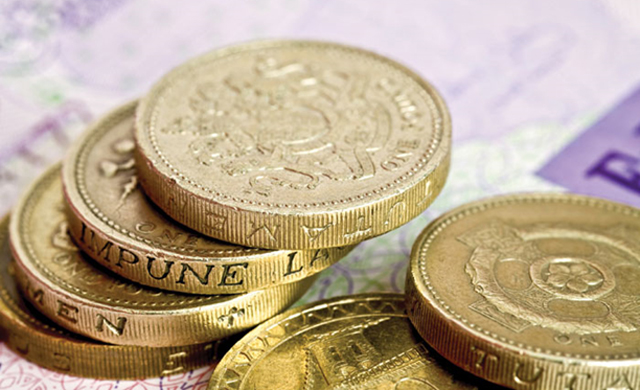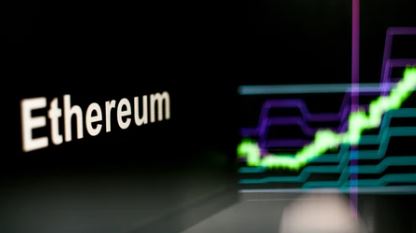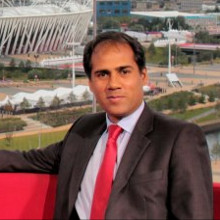Gambling may appear as a game of chance and luck from a distance but the more you learn about it, the more you will realize that there is a method to this method. Yes, in the end gambling is heavily based on luck and probability but professional gamblers have come up with strategies to reduce the dependence on luck and chance to a minimum level by using the power of statistics.

In 2008 a 22 year old man named Peter Eastgate defeated over 6500 professional poker players to become the youngest ever player to win the World series of Poker. The secret behind his success was that he used probability and statistics to calculate his odds and his technique clearly worked.
Gambling may appear as a fluke but upon studying it one finds that in the end gambling simply deals with chance right, we have already established this and what is chance? Chance is simply the probability of an event occurring or not occurring. Well those who have studied simple of advanced statistics will know that every event can be converted into a probability to find out the odds of that event occurring or not.
If you look at Las Vegas casino games, then there are three things that can help us calculate the odds of an outcome.
- Probability
- Expected Value
- Volatility Index
What is the probability of an event?
The probability of every casino game can be calculated quite easily. In a coin flip the probability of a heads or tails coming with each flip is exactly ½. Similarly the probability of a fair dice landing on a particular face can also be calculated, in fact it is 1/6 because each side has an equal chance of landing and the same goes for card games as well. A standard pack of cards has 52 cards and therefore using this number the probability of every single card can be calculated.
Professional gamblers do not even have to calculate these probabilities because they simply memorize the probabilities to quickly calculate the odds during a game. Knowing the probability however is only the first part. Probability will only help a gambler in determining the odds of the occurrence of an event. The probability of getting a heads on a coin flip is ½ as stated above, but what does this mean to the gambler? Nothing on its own. Gamblers are not statisticians, they don`t gamble simply to learn and calculate the probability, they gamble to earn money and therefore unless probability can help them make decisions that will maximize their chances of winning, it is of no use.
Expected Value
This is where expected values come into the equation. The expected value formula is used in cash flow forecasting to determine the feasibility of entering into a project. Financial analysts use the expected values to determine whether the business should undertake a particular project or not. Gamblers have found out a similar use for this formula. The expected value formula can tell the gambler about the expected amount that they can win from a gamble. The expected value formula is simply the sum of all probabilities multiplied by their outcomes.
For instance, suppose Mr. A flips a coin and pays $1 to Mr. B if the coin lands a head and takes away $1 from Mr. B if the coin lands in a tails. What would be the expected value of this gamble?
| Probability of getting a heads: 0.5 |
| Probability of getting a tails: 0.5 |
| Reward of getting a heads: $1 |
| Loss of getting a tails: $-1 |
| Expected value: (0.5 x 1) + (0.5 x -1) = 0 |
This is what I called a fair game because both sides have equal odds. If a gambler calculate the odds of a game as equal, they will be less likely to gamble because such a game would depend entirely on luck and chance. Probability won`t help here. However if the game is “unfair” i-e the odds are biased then a gambler will think twice about engaging.
For instance in the same example, suppose now if Mr. A gives M. B $2 for every time the coin lands a head and takes away $1 for every tails then the expected value would look something like this.
| Probability of getting a heads: 0.5 |
| Probability of getting a tails: 0.5 |
| Reward of getting a heads: $2 |
| Loss of getting a tails: $-1 |
| Expected value: (0.5 x 2) + (0.5 x -1) = $0.5 |
This means that the expected value of a single coin flip is $0.5. so for instance if Mr. B played this game ten times, the expected value for him of the ten coin flips would be $5.
Thus using the expected value, gamblers can combine probability and the reward or loss from a gamble to determine the expected value that they can walk away with. But this too isn’t enough for a gambler because expected value only tells the calculated “expected value”, these are not the real values. If the probability of getting a heads is 0.5 then this doesn’t mean that you cannot get five straight heads on five coin flips, this is entirely possible. The odds of this happening are low, very low but this is entirely possible. Similarly in a game of cards the odds of having a royal flush are extremely low but players do get the royal flush.
Volatility Index
So professional gamblers also look at the standard deviation between the expected values and actual results. This is technically called the volatility index and this is yet another technique used in financial investment. Volatility index shows the expected movement in the price of a security, ideally if the volatility of a security or an asset is high then trading that asset can result in higher profits. Volatility index tells the difference between the expected value and the possible reward or loss from an actual attempt.
Thus volatility index is used by gamblers to calculate the odds of winning more than the expected value. Expected value can be considered as the minimum threshold and if the volatility index of an attempt, a game or a hand is more than the expected value then the gambler will take a chance, as the odds are more in their favor.
It has to be remembered as this point that the long run expected value of most casino games are in the negative, this means that over the long run the house always has an advantage but professional gamblers still try their luck and end up winning against the odds. This is because of the volatility index. To understand this a little better, look at the price movements of any security. In the short term you will see that the price of a security fluctuates on a daily basis. During the trading session the price of a security may go up and down several times and this is known as volatility. If a gambler were to gamble, they`d study the pattern of this volatility and then try to bet on it.
In the long run however, the price of that security appears stable because if you look at monthly, quarterly or weekly graphs for price movements, they will depict a less volatile picture because of mean reversion, which simply means that in the long run price movements are average. This mean reversion for gamblers is like the expected value of a gamble. It tells them what they can expect in the long run whereas the volatility index tells them the odds of winning above the expected value.
Professional gamblers also develop other traits and habits that help them gamble in a better manner. They learn to pick up certain signals such as body language and behavior of opponents in a game, the art of bluffing and other psychological tactics to confuse and force opponents into making a wrong move. These traits, habits and tactics are supplemented by using probability, expected value and volatility index to make informed decisions whether to gamble or not. Gambling however, is far more complicated than this, don’t think that just because you are good at statistics, you can own the casino on a night out. Professional gamblers spend years honing their skills and for them gambling becomes a mix of science and art, it cannot alone be mastered with statistics, it requires patience, sense of timing and above all some sweet luck.

 Hot Features
Hot Features











